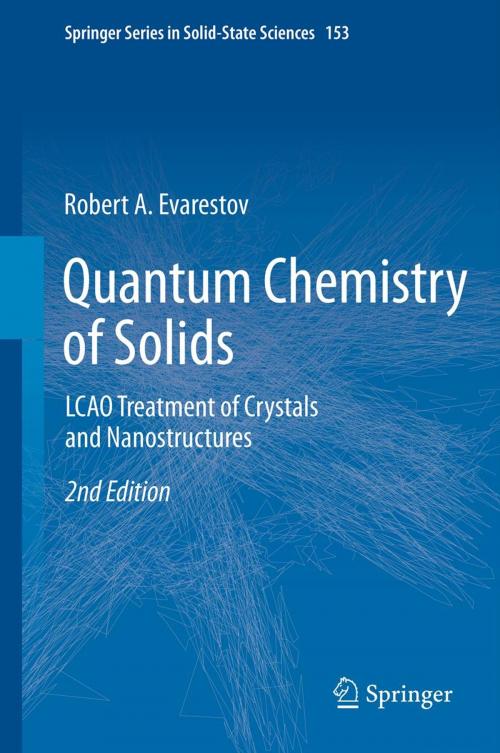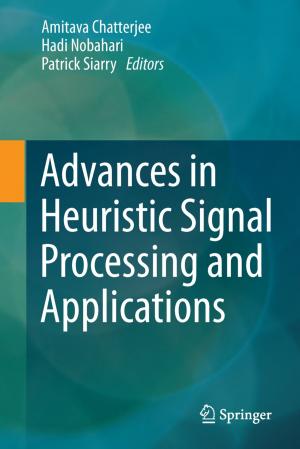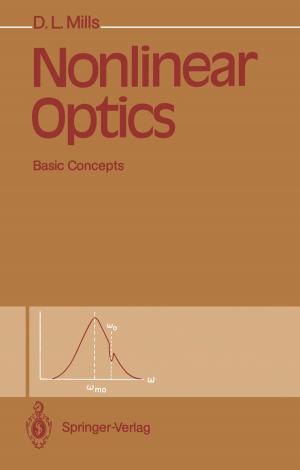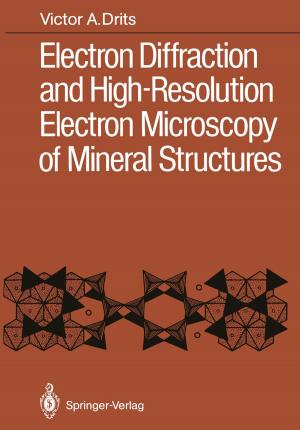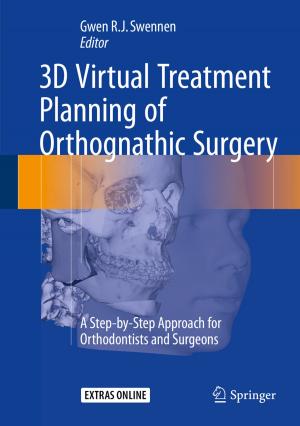Quantum Chemistry of Solids
LCAO Treatment of Crystals and Nanostructures
Nonfiction, Science & Nature, Science, Other Sciences, Nanostructures, Physics, Solid State Physics| Author: | Robert A. Evarestov | ISBN: | 9783642303562 |
| Publisher: | Springer Berlin Heidelberg | Publication: | January 19, 2013 |
| Imprint: | Springer | Language: | English |
| Author: | Robert A. Evarestov |
| ISBN: | 9783642303562 |
| Publisher: | Springer Berlin Heidelberg |
| Publication: | January 19, 2013 |
| Imprint: | Springer |
| Language: | English |
Quantum Chemistry of Solids delivers a comprehensive account of the main features and possibilities of LCAO methods for the first principles calculations of electronic structure of periodic systems. The first part describes the basic theory underlying the LCAO methods applied to periodic systems and the use of Hartree-Fock(HF), Density Function theory(DFT) and hybrid Hamiltonians. The translation and site symmetry consideration is included to establish connection between k-space solid –state physics and real-space quantum chemistry. The inclusion of electron correlation effects for periodic systems is considered on the basis of localized crystalline orbitals. The possibilities of LCAO methods for chemical bonding analysis in periodic systems are discussed.
The second part deals with the applications of LCAO methods for calculations of bulk crystal properties, including magnetic ordering and crystal structure optimization. In the second edition two new chapters are added in the application part II of the book.
Chapter 12 deals with the recent LCAO calculations and illustrates the efficiency of the scalar-relativistic LCAO method for solids, containing heavy atoms. Chapter 13 deals with the symmetry properties and the recent applications of LCAO method to inorganic nanotubes.
New material is added to chapter 9 devoted to LCAO calculations of perfect-crystal properties. The possibilities of LCAO method for calculation of the high-frequency dielectric constants of crystals and the description of phase transitions in solids are discussed. The efficiency of LCAO method in the quantum-mechanics-molecular dynamics approach to the interpretation of x-ray absorption and EXAFS spectra is illustrated. A new section is devoted to recent LCAO calculations of electronic, vibrational and magnetic properties of tungstates MeWO4 (Me: Fe,Co,Ni,Cu,Zn,Cd).
Quantum Chemistry of Solids delivers a comprehensive account of the main features and possibilities of LCAO methods for the first principles calculations of electronic structure of periodic systems. The first part describes the basic theory underlying the LCAO methods applied to periodic systems and the use of Hartree-Fock(HF), Density Function theory(DFT) and hybrid Hamiltonians. The translation and site symmetry consideration is included to establish connection between k-space solid –state physics and real-space quantum chemistry. The inclusion of electron correlation effects for periodic systems is considered on the basis of localized crystalline orbitals. The possibilities of LCAO methods for chemical bonding analysis in periodic systems are discussed.
The second part deals with the applications of LCAO methods for calculations of bulk crystal properties, including magnetic ordering and crystal structure optimization. In the second edition two new chapters are added in the application part II of the book.
Chapter 12 deals with the recent LCAO calculations and illustrates the efficiency of the scalar-relativistic LCAO method for solids, containing heavy atoms. Chapter 13 deals with the symmetry properties and the recent applications of LCAO method to inorganic nanotubes.
New material is added to chapter 9 devoted to LCAO calculations of perfect-crystal properties. The possibilities of LCAO method for calculation of the high-frequency dielectric constants of crystals and the description of phase transitions in solids are discussed. The efficiency of LCAO method in the quantum-mechanics-molecular dynamics approach to the interpretation of x-ray absorption and EXAFS spectra is illustrated. A new section is devoted to recent LCAO calculations of electronic, vibrational and magnetic properties of tungstates MeWO4 (Me: Fe,Co,Ni,Cu,Zn,Cd).
